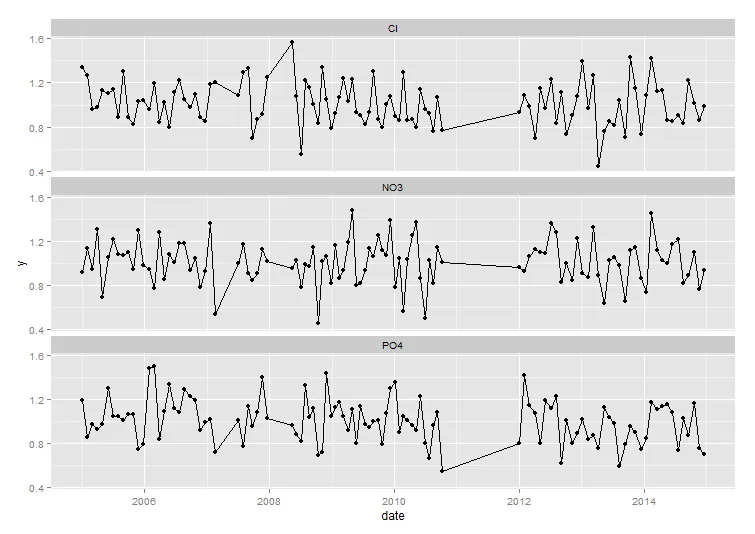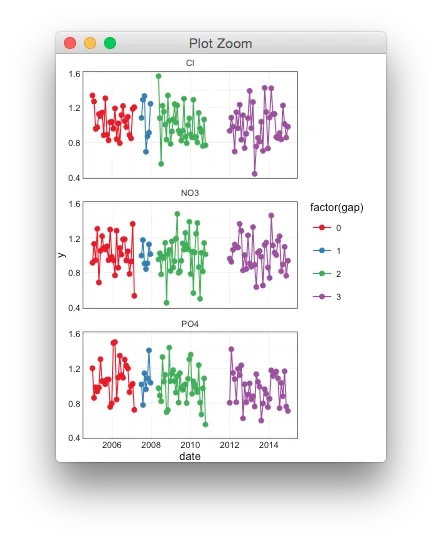我拥有一组水质测量数据,时间序列不规则(通常每月进行一次测量,但不是每个月的同一天)。我已经使用下面的代码在神奇的ggplot中绘制了这些数据,并用一条线连接了所有测量点。
然而,有时会出现间隔期,几个月内没有进行测量。我想在这些间隔点之间用另一种线型或颜色绘制线条(例如,如果间隔大于60天,则使用虚线和灰色)。我需要为此拆分我的数据吗?我该如何处理?
然而,有时会出现间隔期,几个月内没有进行测量。我想在这些间隔点之间用另一种线型或颜色绘制线条(例如,如果间隔大于60天,则使用虚线和灰色)。我需要为此拆分我的数据吗?我该如何处理?
library(ggplot2)
library(lubridate)
xdate <- as.Date(c(seq.POSIXt(ymd("2005-01-01"), ymd("2007-03-04"), by = "30 days"),
seq.POSIXt(ymd("2007-07-03"), ymd("2007-12-31"), by = "28 days"),
seq.POSIXt(ymd("2008-05-15"), ymd("2010-10-10"), by = "25 days"),
seq.POSIXt(ymd("2012-01-01"), ymd("2014-12-31"), by = "31 days")))
set.seed(321)
df <- data.frame(date = rep(xdate,3), par=rep(c("Cl","PO4","NO3")), y=rnorm(318,1,0.2))
ggplot(df, aes(x=date, y=y)) +
geom_point(size=2) +
geom_line() +
facet_wrap(~par, nrow=3)


